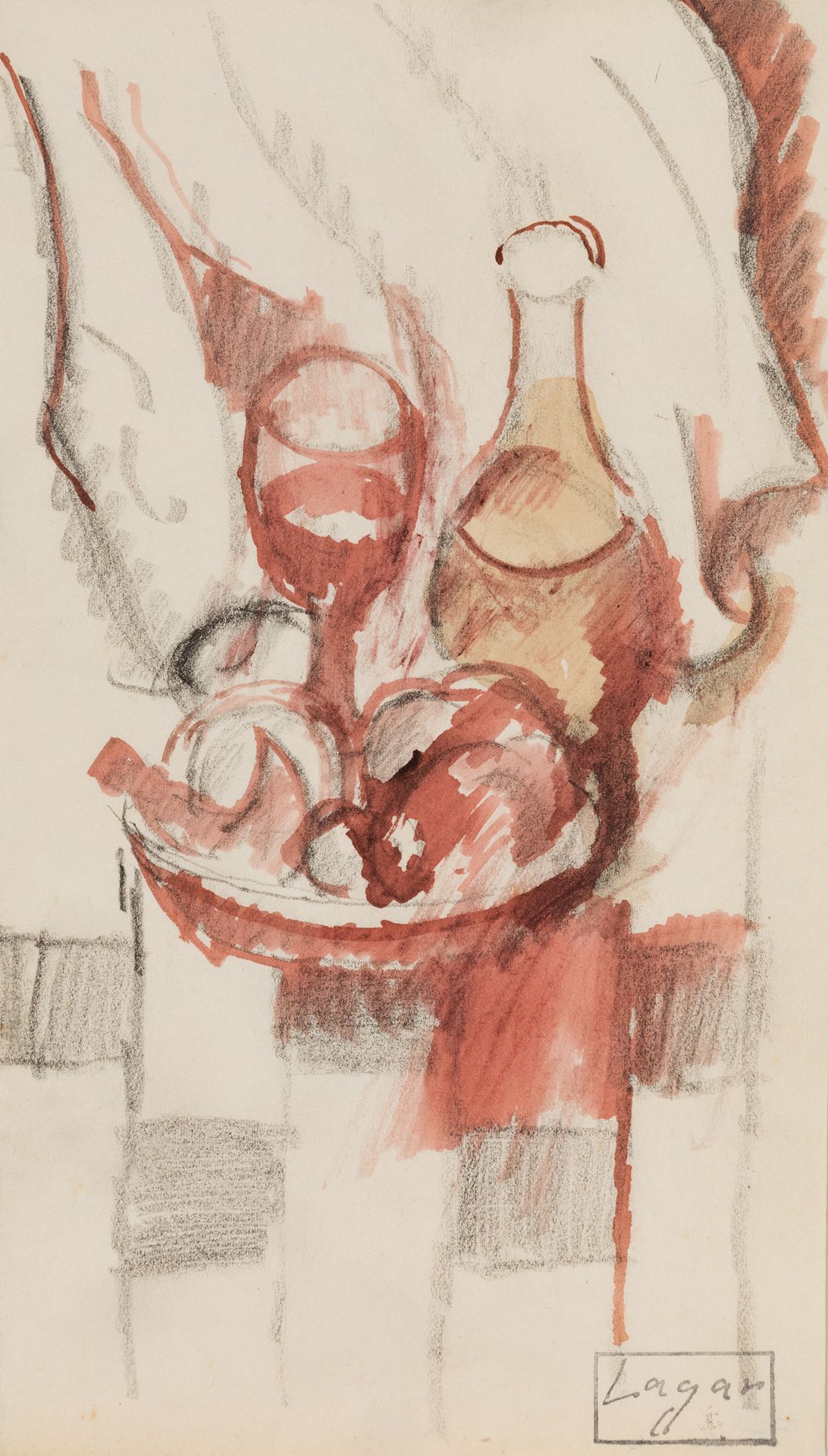Description
CELSO LAGAR ARROYO (Ciudad Rodrigo, León, 1891 - Seville, 1966). Untitled. Mixed media on paper. Signed with stamp in Atelier. Size: 21 x 12 cm; 33 x 24 cm (frame). Celso Lagar began his training in the field of sculpture with Miguel Blay in Madrid. His teacher advised him to travel to Paris to complete his studies and, after spending a year in Barcelona, he travelled to the French capital for the first time in 1911. Lagar's career, both personally and artistically, can be divided into four distinct periods, marked by the two World Wars. The first of these periods is that of apprenticeship, in Madrid, Barcelona and Paris, in contact with artists such as Amadeo Modigliani. This period came to an end when he was forced to leave Paris at the outbreak of the Great War. He settled in Barcelona but held several exhibitions in the French capital, which served as a letter of introduction on his return to the city after the war, in 1919. By then Lagar was already an established artist, and he settled permanently in Paris. He held regular exhibitions in the best Parisian galleries (Berthe Weil, Percier, Zborowski, Barreiro, Brouant, Druet), his style reached its personal maturity and he devoted himself fully to painting, leaving sculpture behind. He developed a style of painting centred on very specific themes: still lifes, Spanish themes, landscapes and circus scenes. After the period of avant-garde influences (cubist, fauvist, etc.), Lagar achieved his own style, marked by the influences of Goya and Picasso. His palette gradually cooled, but his favourite themes remained the same, and his recognition by the public and critics increased. The outbreak of the Second World War marked the end of Lagar's golden age. He emigrated to the French Pyrenees, and his return to the recently liberated city of Paris did not have the repercussions he had hoped for, as the collecting public demanded new content and modes. After his wife fell ill in 1956, Lagar fell into a deep depression and was admitted to a psychiatric hospital. He gave up painting for good and returned to Spain in 1964, spending his last years at his sister's house in Seville. Lagar is represented in the Museum of Contemporary Art in Madrid, the Museum of Art Nouveau and Art Deco Casa Lis, the Patio Herreriano in Valladolid, the Petit Palais in Geneva, the Fine Arts Museums of La Rochelle, Castres and Honfleur (France) and in prestigious collections such as the Crane Kallman (London), the Zborowski (Paris) and the Mapfre (Madrid).
93
CELSO LAGAR ARROYO (Ciudad Rodrigo, León, 1891 - Seville, 1966). Untitled. Mixed media on paper. Signed with stamp in Atelier. Size: 21 x 12 cm; 33 x 24 cm (frame). Celso Lagar began his training in the field of sculpture with Miguel Blay in Madrid. His teacher advised him to travel to Paris to complete his studies and, after spending a year in Barcelona, he travelled to the French capital for the first time in 1911. Lagar's career, both personally and artistically, can be divided into four distinct periods, marked by the two World Wars. The first of these periods is that of apprenticeship, in Madrid, Barcelona and Paris, in contact with artists such as Amadeo Modigliani. This period came to an end when he was forced to leave Paris at the outbreak of the Great War. He settled in Barcelona but held several exhibitions in the French capital, which served as a letter of introduction on his return to the city after the war, in 1919. By then Lagar was already an established artist, and he settled permanently in Paris. He held regular exhibitions in the best Parisian galleries (Berthe Weil, Percier, Zborowski, Barreiro, Brouant, Druet), his style reached its personal maturity and he devoted himself fully to painting, leaving sculpture behind. He developed a style of painting centred on very specific themes: still lifes, Spanish themes, landscapes and circus scenes. After the period of avant-garde influences (cubist, fauvist, etc.), Lagar achieved his own style, marked by the influences of Goya and Picasso. His palette gradually cooled, but his favourite themes remained the same, and his recognition by the public and critics increased. The outbreak of the Second World War marked the end of Lagar's golden age. He emigrated to the French Pyrenees, and his return to the recently liberated city of Paris did not have the repercussions he had hoped for, as the collecting public demanded new content and modes. After his wife fell ill in 1956, Lagar fell into a deep depression and was admitted to a psychiatric hospital. He gave up painting for good and returned to Spain in 1964, spending his last years at his sister's house in Seville. Lagar is represented in the Museum of Contemporary Art in Madrid, the Museum of Art Nouveau and Art Deco Casa Lis, the Patio Herreriano in Valladolid, the Petit Palais in Geneva, the Fine Arts Museums of La Rochelle, Castres and Honfleur (France) and in prestigious collections such as the Crane Kallman (London), the Zborowski (Paris) and the Mapfre (Madrid).
